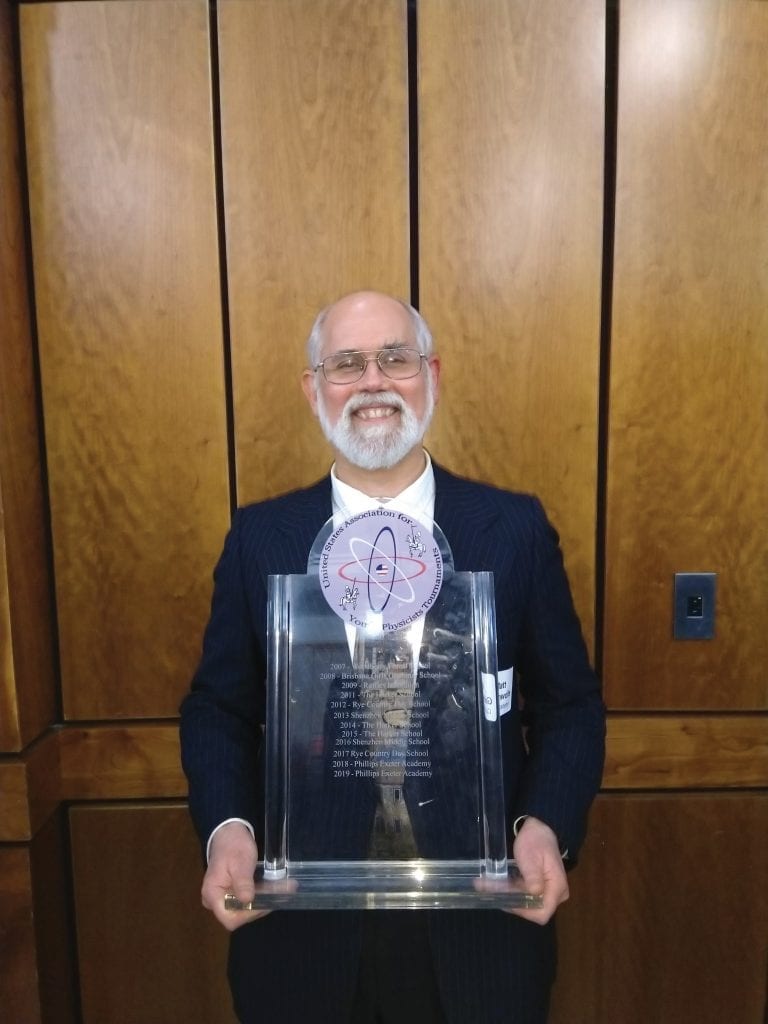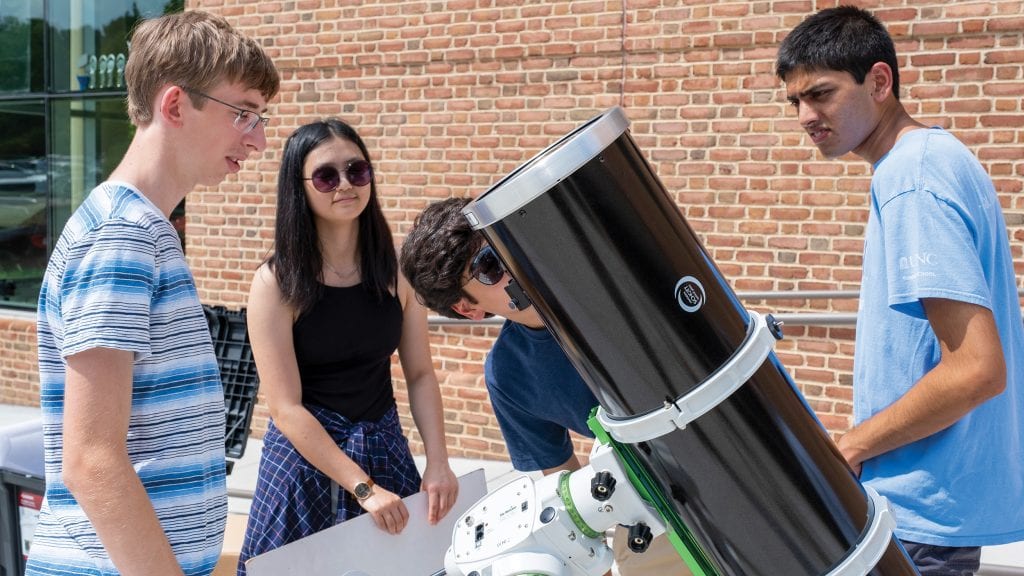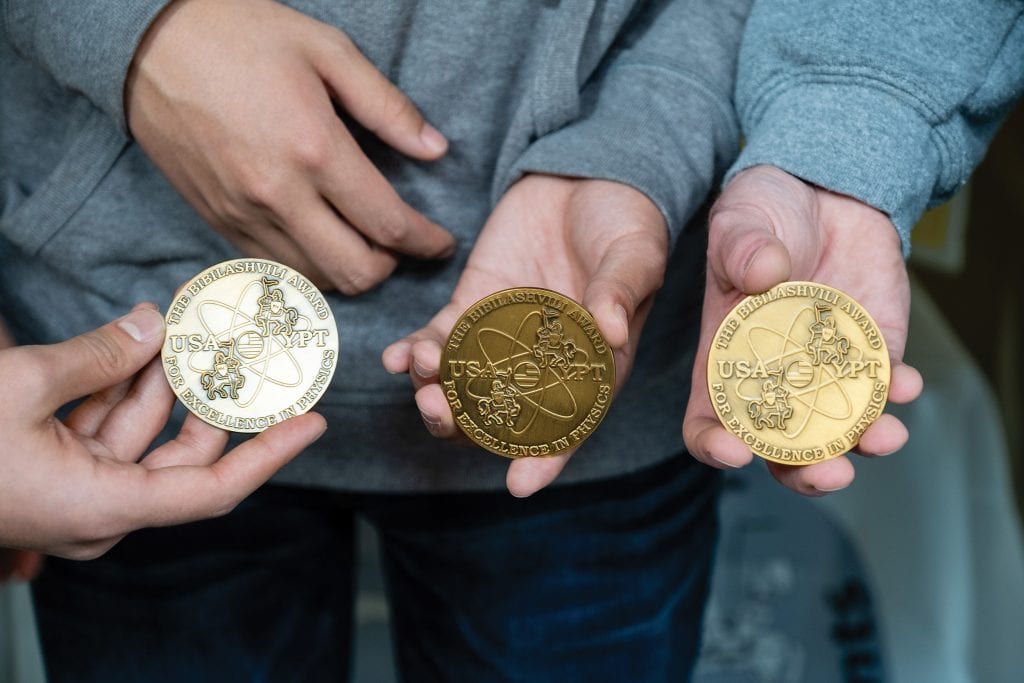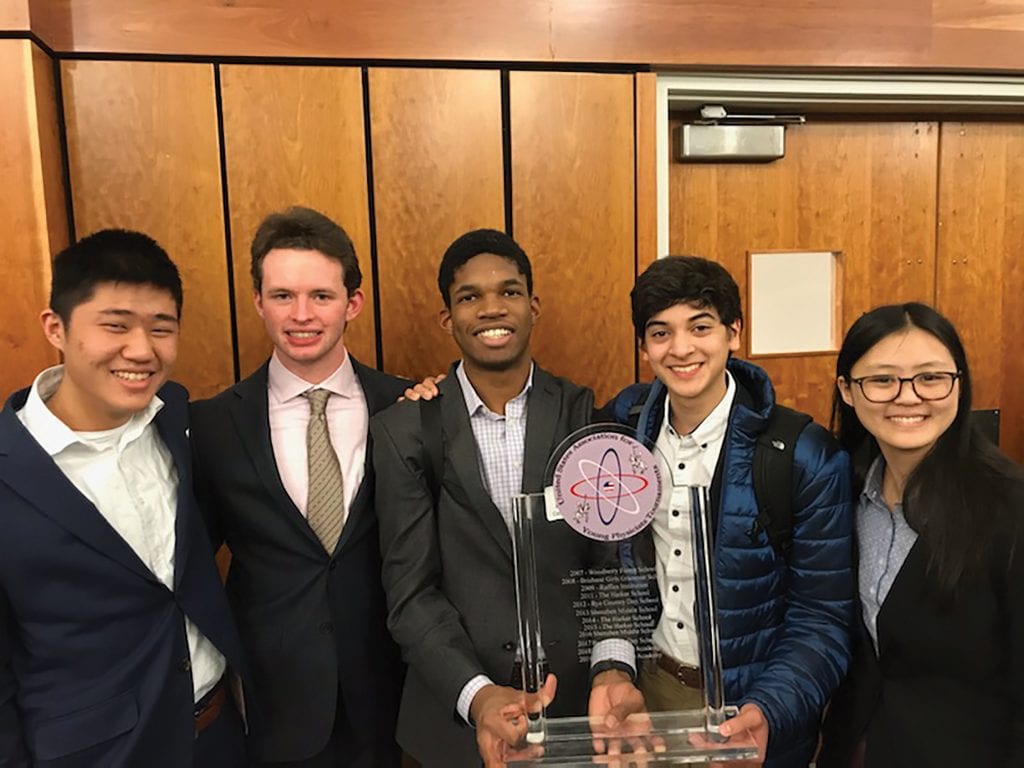Upper School physics teacher Dr. Matt Greenwolfe has a lot of faith in his physics students.

Even so, when he founded Cary Academy’s U.S. Association for Young Physicists Tournament (USAYPT) team five years ago, the idea of winning a USAYPT Championship seemed a far-flung dream. But after years of hard work, perseverance, and teamwork, he and his team of talented students can count it as a dream finally realized.
In early February, 12 members of CA’s USAYPT team*—Will Aarons ’20, Anna Cheng ’20, Colin Frazer ’22, Paul Ibrahim ’21, Myla James ’21, Owen Kadis ’23, Andrew Lake ’22, Matthew Modi ’20, Obinna Modilim ’22, Jay Sagrolikar ’21, Brian Wei ’22, and Colin Zhu ’20–traveled to the annual tournament in Exeter, New Hampshire. Led by Greenwolfe and fellow faculty members Charlotte Kelly, Dr. Robert Coven, and Dick Mentock, with assistance from Rachel Atay, and Betsy MacDonald, they were crowned USAPYT champions.
Greenwolfe is still smiling. “When the second-place team was announced, we all erupted. I had a physical, whole-body reaction, and a huge grin on my face. After trying for so many years to keep improving, we had done it.”
The U.S. Invitational Young Physicists Tournament is a prestigious international physics research competition and science debate tournament. Over the course of the year, competing schools research solutions to four complex physics problems, coming together to debate their solutions in front of a jury of professional physicists.
For 2020, the USAYPT problems involved measuring the length of one Astronomical Unit (the distance between the Earth and the sun), investigating Archimedes’ Death Ray, designing stable arrangements of spherical magnets, and exploring the physics of the apparent weight of an hourglass.

“For the students who fully commit themselves, the amount of physics learning that takes place through this program can dwarf what is learned in class,” offers Greenwolfe. “Plus, they get the experience of undertaking a legitimate research project–with all its ups and downs and frustrations–for a whole year. We have to learn from each setback, each surprising result. We have to persist—and that’s just what we did.”
Tournament competition consists of rounds called “physics fights.” A student from the reporting team presents a summary of their research into one of the tournament problems. Next, a student from the opposing team is charged with helping the audience understand the strengths and weaknesses of the report by means of a series of discussion questions. After this conversation is complete, jury members question the presenting students directly. USAYPT teams are judged as much on their ability to ask and answer questions in the physics fight, as the quality of their research and initial presentations.
After facing reigning champions Phillips Exeter Academy, perennial powerhouse Phillips Andover Academy, and a team from the Republic of Georgia, CA stood in third place after the first day of the tournament, securing a spot in the finals. When the dust settled at the end of the second day, CA stood atop the standings of the six finalist teams—besting Phillips Exeter and the Nueva School for the championship–on the strength of their original research, presentations, and questions.
In addition to top-notch mathematical physics, Greenwolfe credits his team’s hard work, teamwork, and deep engagement with the problems as contributing to their success. Rather than relying on simulations developed by professionals or online data sets, the team worked hard all year to gather their own data. They tested it against their theories and their own simulations, discussing and debating it amongst themselves every step of the way.

Ultimately, those efforts resulted in a deeper conceptual understanding of the problems and left them well-prepared for tournament debate. “We could reason and answer unexpected questions without going back to a reference or equation,” explains Greenwolfe.
“We were professional in our questioning of other teams; we were always respectful, persistent in trying to have a deep conversation about the physics. We never intentionally tried to expose flaws or embarrass the other team,” he offers.
And now that they’ve reached the pinnacle, what comes next? The team is already gearing up for next year’s tournament, which CA will host at North Carolina State University. And they’re already pondering next year’s problems and are ready to get to work.
*In addition to the 12 members of the traveling team, fellow team members Russell Burns ’21, Ryan Chen ’21, Felipe Chiavegatto ’20, Harrison Coman ’23, Dane Fekete ’20, Allen He ’21, Sedef Iz ’22, Grace Jaeger-Sandruck ’22, Marvin Koonce ’21, Max Li ’23, Sophia Liu ’22, Scott Matton ’20, Rin Mauney ’22, Ashleigh Smith ’22, Eric Wang ’20, Oliver Wang ’22, Leah Wiebe ’23, Eric Xing ’20, and Han Zhang ’21 also made contributions to the problem-solving efforts.

